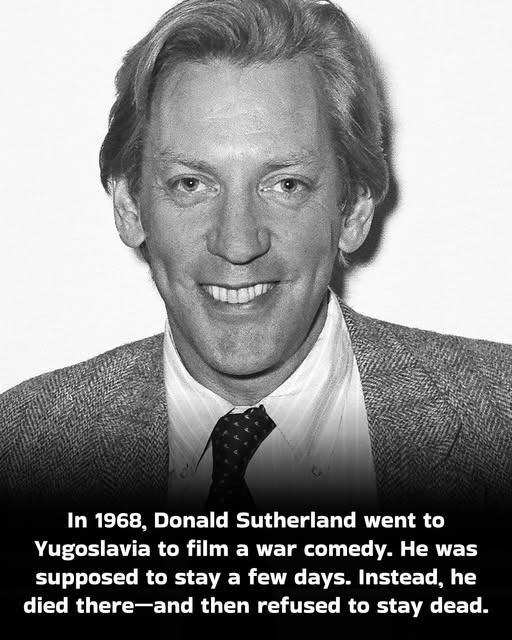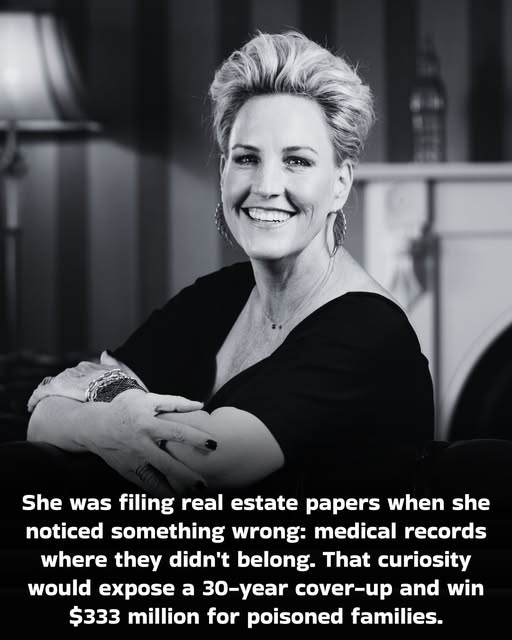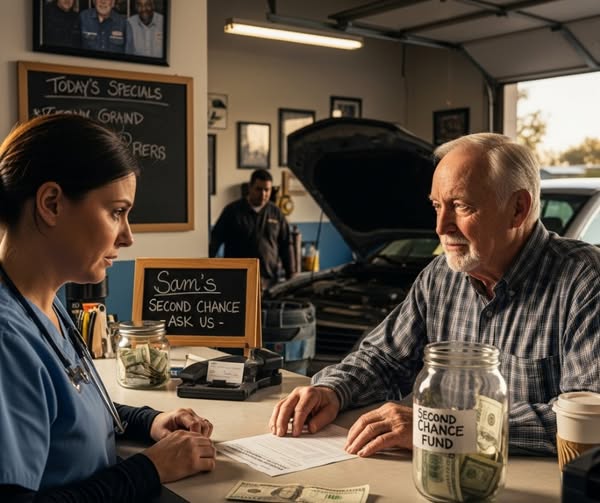
Erin Brockovich

Quote of the Day
“Life isn’t about finding yourself. Life is about creating yourself.”
George Bernard Shaw – Dramatist (1856 – 1950)
The Nurse and Albert

“My name’s Albert. I’m 72. I work the counter at Sam’s Auto Repair on Chestnut Street. $11 an hour, writing up repair orders, calling customers when their cars are ready. I don’t fix the cars myself anymore. Bad knees. Just handle the paperwork.
But I see people’s faces when we tell them the cost.
Like the nurse who came in last Tuesday. Transmission problem. $1,800 to fix. She just stood there, staring at the estimate. “I can’t,“ she whispered. “I work night shifts. No car means no job. But I don’t have $1,800”
I looked at Sam, the owner. He shook his head. “Sorry ma’am. That’s the cost.”
She left crying.
That night, I stayed late. Called Sam at home. “What if we did the transmission for $600? I’ll cover the rest. Take it from my paycheck. Monthly installments.”
Long pause. “Albert, that’s your money.”
“So? She needs to work. I need to help.”
He sighed. “You’re gonna go broke doing this.”
“Maybe. But she’ll have a car.”
We called her back. Sam told her we “found a used transmission, much cheaper” She cried again. Different tears.
Started doing it regularly. Covering repair costs people couldn’t afford. Mechanics would give me the real price. I’d tell customers a lower one. Pay the difference over months from my paycheck.
Sam caught on. Pulled me aside. “Albert, you’ve paid for eight repairs this year. That’s $3,000”
“People need their cars to survive”
He studied me. Then, “I’ll match you. Whatever you cover, I’ll cover half. We do this together3”
Word got out somehow. Customers started leaving money. “For whoever can’t afford repairs” We started a jar. “Sam’s Second Chance Fund.” When someone’s desperate, we use it.
That nurse? She brings us coffee every week. And she put $50 in the jar last month. “For the next person,” she said.
I’m 72. I write repair orders at a small garage.
But I’ve learned this, cars aren’t just transportation. They’re how people get to work. Get kids to school. Get to the hospital. Survive.
And nobody should lose everything because their car broke down.
So find your repair. Your thing you can fix for someone. Then fix it. Quietly.
Because sometimes, keeping someone’s car running keeps their whole life running.”
Fixing A Toaster… …And A Person

I was locking the door on fifty years of my life when he slammed his hand against the glass, desperate, looking like a man who was about to lose the only thing keeping him tethered to the earth.
I didn’t want to open it. The “For Lease” sign was already taped up, mocking me with its bright orange optimism. Inside, my shop was dark. The air smelled of what it always had: ozone, solder, and dust that settled before the internet was born. I was done. At seventy-four, my back felt like a rusted hinge and my rent had just tripled because the neighborhood now needed another artisanal cold-brew coffee lab more than it needed a man who could rewire a lamp.
But the boy—he couldn’t have been more than twenty-eight—kept pounding. He wasn’t threatening; he was terrifyingly fragile. He held a cardboard box against his chest like it contained a bomb or a beating heart.
I sighed, the sound rattling in my chest, and turned the key one last time.
“We’re closed,” I said, cracking the door. “Permanently. Read the sign.”
“Please,” he gasped. He was wearing a suit that cost more than my van, but his eyes were red-rimmed shadows. “You’re the only one left. I Googled ’repair shops’ for three hours. You’re the only one who doesn’t just sell phone cases.”
He pushed past me before I could argue, placing the box on the counter. He opened it with trembling hands. Inside wasn’t a bomb. It was a toaster.
Not one of those plastic shells you buy for twenty bucks at a big-box store that die in six months. This was a 1950s chrome tank. Heavy as a cinderblock, with rounded curves and a cloth-wrapped cord.
“It won’t go down,” he said, his voice cracking. “The lever. It won’t stay down.”
I looked at the clock. I had to be out by five. “Son, go buy a new one. That thing is a fire hazard.”
“I can’t,” he whispered. “It was my grandmother’s. She died Tuesday. The funeral is tomorrow morning. I promised my mom… I promised I’d make Gram’s cinnamon toast for breakfast before we leave for the cemetery. It’s the only thing that feels real right now. And I broke it.”
He looked up at me, and I saw the crack in his veneer. He wasn’t just talking about a kitchen appliance.
“I tried to fix it,” he confessed, looking at his hands—soft, uncalloused, typing hands. “I watched a video. But I couldn’t even find a screw. It’s like a puzzle I’m too stupid to solve. Everything I own is like that. I pay for it, but I don’t understand it.”
That hit me. That was the sickness of this whole decade.
I locked the door and flipped the sign to Closed. “Bring it here.”
I cleared a space on the workbench, sweeping aside the remnants of my packing. I plugged in my soldering iron. It hummed to life, a familiar comfort.
“What’s your name?” I asked.
“Julian.”
“I’m Elias. Now, Julian, look at this.” I pointed to the bottom of the toaster. “You couldn’t find the screws because they didn’t want you to. But back when this was made, they assumed the owner had a brain. The tabs are hidden under the rubber feet.”
I popped the feet off and unscrewed the base. The chrome shell slid off, revealing the naked machinery inside. It was beautiful in its simplicity. Mica sheets, nichrome wire, a simple bimetallic strip. No microchips. No software updates. No terms of service.
“You’re an engineer?” I asked, noticing the ring on his finger—the iron ring of the profession.
Julian laughed, a bitter, dry sound. “Software. I work for a… a large platform. You know what I did last week? I spent sixty hours optimizing an algorithm that keeps teenagers staring at their screens three seconds longer. That’s my contribution to history. If I died today, my work would be deleted or rewritten in a month.”
He stared at the exposed wires of the toaster. “This thing… this thing has lasted seventy years. It fed my dad. It fed me. What have I built that will last seventy years?”
I handed him a pair of needle-nose pliers. “Stop talking. Hold this spring.”
He hesitated. “I might break it.”
“It’s already broken,” I grunted. “That’s the beauty of metal, Julian. It forgives you. You bend it back. You try again. It’s not like your code. You can touch it.”
I guided his hands. We found the problem—a buildup of carbon on the electromagnet contact and a bent latch arm.
“This is why I’m closing,” I said, scraping the carbon away with a small file. “Nobody wants to scrape the carbon anymore. It’s cheaper to throw it in a landfill and buy a new shiny box. They call it ’convenience.’ I call it surrendering.”
“It’s not just convenience,” Julian said softly. “It’s exhaustion, Elias. We’re tired. I make six figures, and I can’t afford a house in this zip code. I have a degree, and I’m terrified of an AI taking my desk. Everything feels like a subscription. I rent my music, I rent my storage, I rent my life. This toaster… it’s the only thing I actually have.”
I looked at him. Really looked at him. I saw the anxiety that seemed to vibrate in the air around young people these days. They were told they could be anything, but they ended up being users. Customers. Data points.
“Then earn it,” I said sternly. “Tighten that nut. Not too hard—snug. Feel the tension.”
He turned the screwdriver. He bit his lip. For twenty minutes, the world outside didn’t exist. There were no emails, no shareholders, no rent hikes. Just the mechanical logic of a latch engaging with a catch. Cause and effect. Tangible truth.
“Okay,” I said. “Plug it in.”
He hesitated, then pushed the plug into the wall. He pressed the lever down.
Click.
It stayed.
We waited. Ten seconds. Twenty. Then, the faint, dry scent of heating dust filled the shop—the perfume of resurrection. The coils inside glowed a deep, angry orange. It was alive.
Julian let out a breath that sounded like a sob. He stared into the glowing coils as if they were a campfire in a frozen wilderness.
“We did it,” he whispered.
“You did it,” I corrected. “I just showed you where to look.”
He pulled a wallet from his jacket. It was thick, expensive leather. “How much? I’ll write you a check. Five hundred? A thousand? Seriously, name it.”
I unplugged the iron and started winding the cord. “Put your money away.”
“No, I have to pay you. You saved me.”
“You can’t pay me, son. The business is closed. Remember?” I picked up the screwdriver we’d used—an old Craftsman with a clear acetate handle, battered and stained with grease from 1985. I pressed it into his hand.
“Take this.”
“What? No, I can’t—”
“Take it,” I commanded. “This is the payment. Listen to me. The world you’re living in? It wants you to be helpless. It wants you to throw things away so you have to buy them again. It wants you to feel like you can’t impact your own reality.”
I closed his fingers around the handle.
“When you go home, don’t just make toast. Look around your apartment. Find a loose hinge. Tighten it. Find a wobbly chair. Glue it. Reclaim your hands, Julian. If you can fix a toaster, you can fix other things. Maybe even things that aren’t made of metal.”
He looked at the tool, then at me. The panic was gone from his eyes, replaced by a quiet, steady weight. He nodded.
He packed the warm toaster back into the box with a reverence usually reserved for religious artifacts. He shook my hand—a firm grip, stronger than when he walked in.
“Thank you, Elias.”
“Go make that toast,” I said.
I watched him walk out. He didn’t check his phone. He walked differently, with the stride of a man who knew how the world worked under the hood.
I turned off the lights in the shop. I looked at the empty shelves, the dusty floor. I wasn’t sad anymore. They could tear this building down. They could put up another glass tower filled with people renting their lives one month at a time. But they couldn’t take away what just happened.
We are told that we are consumers. That we are helpless against the tide of the economy, of technology, of time. But that is a lie sold to us to keep us buying.
The truth is simpler, and it’s the only thing worth knowing:
Anything can be fixed, as long as there is a hand willing to hold the tool, and a heart patient enough to understand why it broke.
I locked the door, leaving the key in the mailbox. I didn’t need it anymore. I had done my job. The shop was closed, but the work—the real work—would continue in a kitchen somewhere, over the smell of cinnamon and heat, where a young man was learning that he wasn’t broken, just in need of a little repair.
Karen Blixen – Out of Africa

Rosina Bulwer-Lytton

Thomas Garrett

J.R.R. Tolkien On Fairy Tales

Anna Mary Moses

Anna Mary Robertson woke up every morning at four o’clock. She did it for seventy-eight straight years, long before anyone ever imagined her name would hang on gallery walls.
The alarm was never a clock. It was habit. Darkness still pressed against the windows when she swung her legs out of bed and pulled on her boots. Cows waited to be milked. Chickens needed feeding. The stove had to be lit. Breakfast had to be cooked for whoever happened to be hungry that morning. After that came the garden, the laundry, the mending, the endless small repairs that kept a farm from falling apart.
This was life in rural New York in the late nineteenth century, and Anna Mary knew no other way to exist.
She was born in 1860, the third of ten children, into a world where survival depended on hands that never rested. Schooling was brief. Childhood was shorter. By the age of twelve, she was sent away to work as a hired girl for wealthier families. Twenty-seven cents a week bought the right to scrub floors, wash clothes, cook meals, and raise children who belonged to someone else.
There was no room for wanting. No space for imagining a different life. Whatever dreams she carried were pushed down until they were nearly forgotten.
Still, something in her noticed beauty. As a child, she crushed berries and mixed the juice with chalk, painting rough colors onto scraps of wood when no one was watching. It was a quiet pleasure, fleeting and impractical. It did not help with rent or bread or winter coats. So she let it go.
At twenty-seven, she married Thomas Moses. Together they farmed land in Virginia, then returned north to New York. Life followed the same rhythm it always had. Work. Weather. Birth. Loss.
Ten children were born. Five survived.
Each death hollowed her a little, but she did not stop. She cooked. She cleaned. She sewed quilts by lamplight after everyone else had gone to bed. She patched clothes until fabric turned thin as paper. She learned endurance the way other people learned art.
Years collapsed into seasons. Seasons into decades. The children grew up and left. Thomas’s back gave out, but he worked anyway. Anna Mary worked alongside him, her hands cracked and strong, her body shaped by repetition.
She rose before dawn. She slept late only when illness forced her to. She never once thought of herself as an artist.
In 1927, Thomas died.
Anna Mary was sixty-seven years old.
The farmhouse fell quiet in a way it never had before. No footsteps. No shared meals. No voices carrying across the fields. For the first time in her life, she belonged only to herself, and she did not know what to do with the silence.
She turned to embroidery, the familiar motion of needle and thread. But age had arrived uninvited. Arthritis stiffened her fingers. Each stitch burned. What had once been comforting became unbearable.
Her sister suggested painting.
“Your hands might manage a brush better than a needle,” she said.
Anna Mary had never held a paintbrush in her life. She had never seen a museum. She did not know what “art” was supposed to look like. But she walked into the general store and bought a few cheap tubes of house paint, the kind meant for barns and fences. She found old boards in the shed. She mixed colors on cardboard.
She was seventy-eight years old when she painted her first picture.
It was simple. A farmhouse. Rolling hills. Figures working the land.
But something opened.
Memories flooded out. Winter sleigh rides. Maple sugaring parties. Barn raisings. Harvest dances. Children skating on frozen ponds. A world she had lived inside and watched slowly disappear.
She painted from memory, not observation. She did not sketch. She did not revise. She worked quickly, confidently, joyfully. Sometimes she painted until two in the morning, humming hymns at her kitchen table.
For three years, she painted without expectation. She gave pictures to neighbors. Sold a few for three or four dollars at the local pharmacy. It was enough to buy groceries. Enough to keep going.
Then, in 1938, a man named Louis Caldor walked past the pharmacy window.
He was an art collector from New York City. The paintings stopped him cold.
He bought every single one.
“Who painted these?” he asked.
“That’s just Grandma Moses,” the pharmacist said. “She’s about eighty.”
Caldor drove straight to her farmhouse. He found her in a calico dress and apron, painting at her kitchen table.
“You’re going to be famous,” he told her.
She laughed. She thought he was teasing.
He wasn’t.
Within two years, her paintings were hanging in New York galleries. Critics called her work primitive. Naive. Untrained. They searched for categories because they didn’t know where to put an elderly farm woman who painted joy without irony.
The public understood immediately.
They saw warmth. Community. A world where people knew each other and seasons mattered. They saw happiness without apology.
At eighty, Anna Mary Moses appeared on the cover of *Life* magazine. At ninety, she painted every day. She worked until she was 101 years old, producing more than 1,600 paintings.
She had spent nearly eight decades doing what survival demanded.
Then she spent the rest of her life doing what her hands had always wanted to do.
She did not talk about inspiration. She did not speak about destiny. She simply painted what she knew and loved.
Anna Mary Moses proved that a beginning does not expire with age. That the life you were meant to live can wait patiently for you. And that sometimes, the longest road leads exactly where it was always supposed to end.
